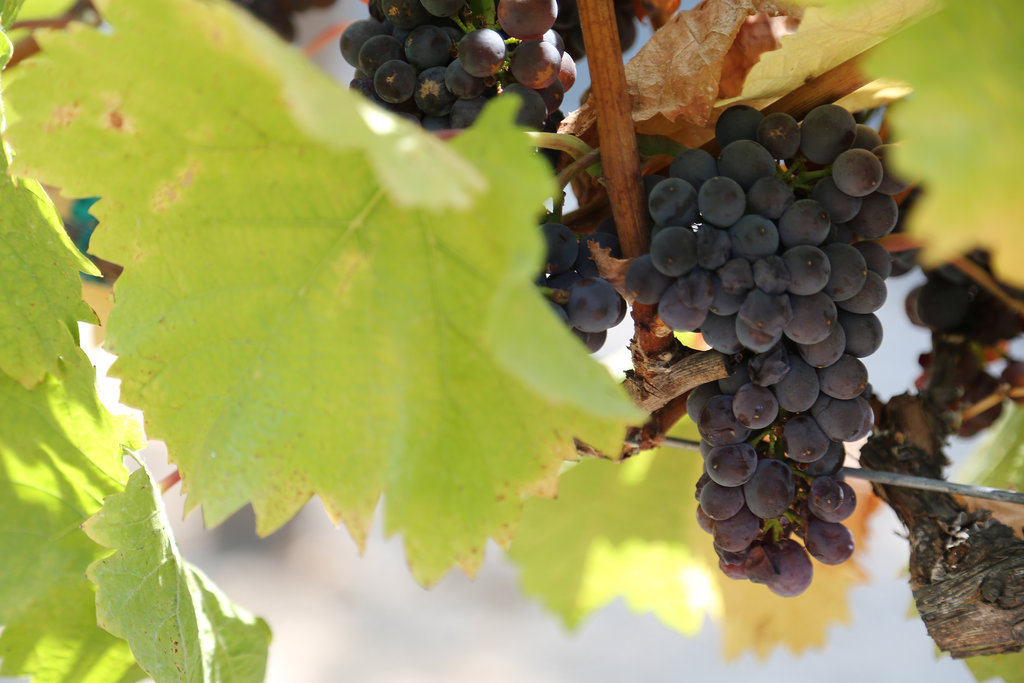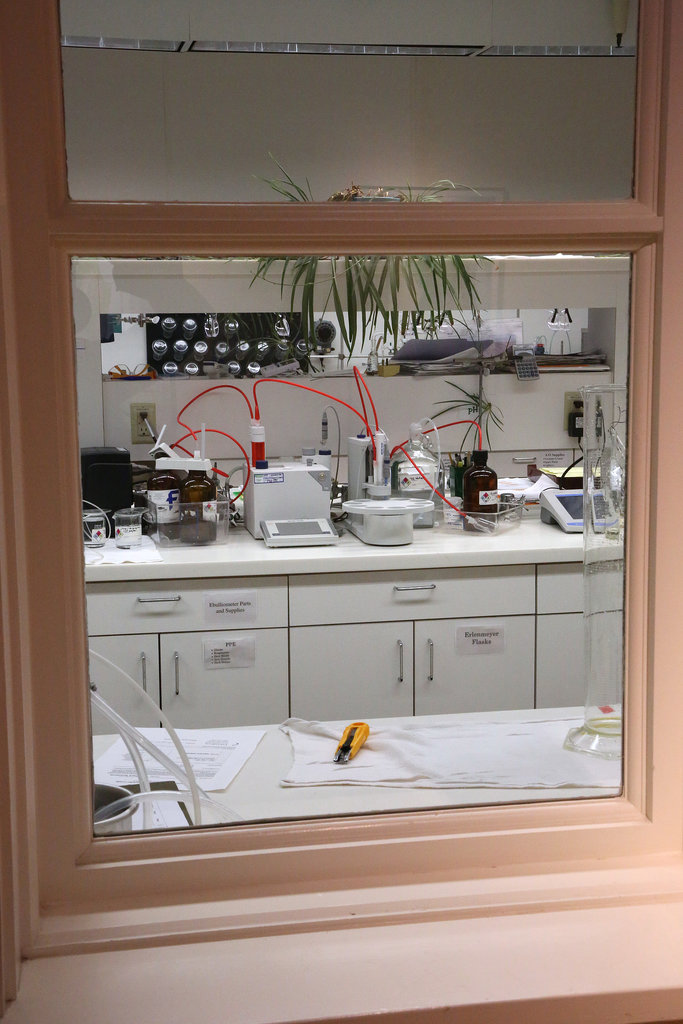
Dont forget to share this with your friends! The grape juice and yeast undergo 14 days of fermentation. According to Mumm representatives, the wine at this stage is tart and nothing special.
Ever wondered what goes into making quality sparkling wine? The answer — aside from lots of grapes, of course — is a lot of labor.
Méthode Champenoise (or méthode traditionnelle when referring to sparkling wines made outside of Champagne, France), is the traditional French method of producing sparkling wines, and while at Mumm Winery in Napa, CA, during harvest, we snapped up photos of the step-by-step process.
Take a look; the involved méthode may inspire you to savor your next glass of bubbly more slowly.
Grape Growing
It all begins with the grapes. In Champagne, the traditional three grapes used to make Champagne are Chardonnay, Pinot Noir, and Pinot Meunier. At Mumm Winery in Napa, other grapes are used too, like Pinot Gris.
Lab Testing
Grapes for sparkling wines are the first to be harvested, because winemakers are looking for grapes with less sugar and more acid. This year, Mumm started harvesting grapes at the end of July! As the grapes reach maturity, samples are brought back to a lab to test for harvest readiness.
Harvesting
When the grapes have reached the right levels, the grapes are harvested by hand around the clock, until everything is picked off the vines.
Undergoing First Fermentation
Next, the leaves and stems are removed, and the grapes are pressed to extract the juice, which goes into giant double-wall stainless steel vats. Here the yeast is added to the juice to trigger the first fermentation.
The grape seeds are sent off to cosmetic companies, and the other organic waste is turned into compost. The grape juice and yeast undergo 14 days of fermentation. According to Mumm representatives, the wine at this stage is tart and nothing special.
It doesn’t have bubbles, hasn’t been aged, and is not blended to perfection.
Blending
Blending is where the winemakers come in. In the center of the room is a blending tank. The winemaker chooses the percentages of each grape varietal and vintage (say 50 percent Chardonnay grapes from 2013 and 50 percent Pinot Noir grapes from 2013).
The fermented grape juices go into a blending tank, and then they are reintroduced to a clean stainless steel tank so that the same process can be done to the other blends.
Undergoing Second Fermentation
The wine is bottled, and cane sugar and more yeast are added to each bottle to trigger a second fermentation. This is where the bubbles come in! Each bottle has a crown cap or another type of temporary seal, and is stored horizontally in a wine cellar for at least 15 months and up to 11 years.
Riddling the Lees
In the bottle, the yeast eats the sugar, and its byproduct is C02 (aka bubbles!). However, over time, the yeast dies and forms the lees, or the dead yeast that looks like sediment on the bottom of the bottle. You never see this in a finished bottle of sparkling wine, because winemakers remove the lees.
Here’s how: After the bottles are through aging, they must undergo the process of riddling. Several times each day, the bottles are slowly tilted vertically and shaken carefully to encourage the lees down toward the neck of the bottle.
Machine-Powered Riddling
This used to all be done by hand, but at Mumm, the riddling now occurs in machine-powered cages.
Disgorging
Once the lees has finally reached the bottom, it’s time to disgorge the wine. The neck of the bottle is frozen, thereby freezing the lees.
When the bottle cap is popped off, the pressure of the carbon dioxide pops off the frozen lees. What’s left is a small space inside the bottle where the lees used to be. Before the bottles are corked, a little dosage — a mixture of the base wine and pure cane sugar — is added.
The sweetness rounds out the flavors and balances any acidity.
Corking
The bottles are then corked, protected with a metal cage, foiled, and shipped across the world for your enjoyment.
Pouring
That’s why Champagne and sparkling wines are so special (not to mention expensive); extreme care and precision goes into each and every bottle.
For many more interesting stories like this, go to http://www.epictreasuretrove.com for more than 200 such articles.
To drive traffic (Solo Ad Clicks) to your Internet Business, website, squeeze page(s), FaceBook likes, Tweeter, Instagram and Pinterest Likes and Followers, go to http://www.bestoftraffic.com
See full story on popsugar.com










